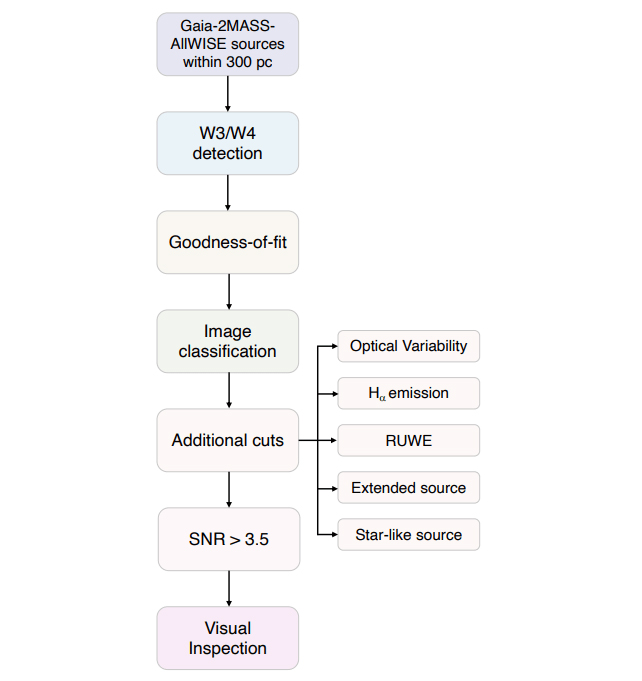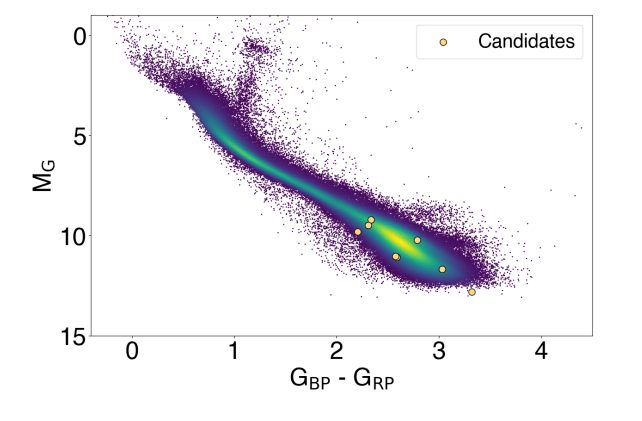Products You May Like
There’s something poetic about humanity’s attempt to detect other civilizations somewhere in the Milky Way’s expanse. There’s also something futile about it. But we’re not going to stop. There’s little doubt about that.
One group of scientists thinks that we may already have detected technosignatures from a technological civilization’s Dyson spheres, but the detection is hidden in our vast troves of astronomical data.
A Dyson sphere is a hypothetical engineering project that only highly advanced civilizations could build. In this sense, ‘advanced’ means the kind of almost unimaginable technological prowess that would allow a civilization to build a structure around an entire star.
These Dyson spheres would allow a civilization to harness all of a star’s energy. A civilization could only build something so massive and complex if they had reached Level II in the Kardashev Scale.

Dyson spheres could be a technosignature, and a team of researchers from Sweden, India, the UK, and the USA developed a way to search for Dyson sphere technosignatures they’re calling Project Hephaistos. (Hephaistos was the Greek god of fire and metallurgy.)
They’re publishing their results in the Monthly Notices of the Royal Academy of Sciences. The research is titled “Project Hephaistos – II. Dyson sphere candidates from Gaia DR3, 2MASS, and WISE.” The lead author is Matías Suazo, a PhD student in the Department of Physics and Astronomy at Uppsala University in Sweden. This is the second paper presenting Project Hephaistos. The first one is here.
“In this study, we present a comprehensive search for partial Dyson spheres by analyzing optical and infrared observations from Gaia, 2MASS, and WISE,” the authors write.
These are large-scale astronomical surveys designed for different purposes. Each one of them generated an enormous amount of data from individual stars.
“This second paper examines the Gaia DR3, 2MASS, and WISE photometry of ~5 million sources to build a catalogue of potential Dyson spheres,” they explain.
Combing through all of that data is an arduous task. In this work, the team of researchers developed a special data pipeline to work its way through the combined data of all three surveys.
They point out that they’re searching for partially-completed spheres, which would emit excess infrared radiation.
“This structure would emit waste heat in the form of mid-infrared radiation that, in addition to the level of completion of the structure, would depend on its effective temperature,” Suazo and his colleagues write.
The problem is, they’re not the only objects to do so. Many natural objects do, too, like circumstellar dust rings and nebulae. Background galaxies can also emit excess infrared radiation and create false positives. It’s the pipeline’s job to filter them out.
“A specialized pipeline has been developed to identify potential Dyson sphere candidates focusing on detecting sources that display anomalous infrared excesses that cannot be attributed to any known natural source of such radiation,” the researchers explain.
This flowchart shows what the pipeline looks like.

The pipeline is just the first step. The team subjects the list of candidates to further scrutiny based on factors like H-alpha emissions, optical variability, and astrometry.
368 sources survived the last cut. Of those, 328 were rejected as blends, 29 were rejected as irregulars, and four were rejected as nebulars. That left only seven potential Dyson spheres out of about 5 million initial objects, and the researchers are confident that those seven are legitimate.
“All sources are clear mid-infrared emitters with no clear contaminators or signatures that indicate an obvious mid-infrared origin,” they explain.
These are the seven strongest candidates, but the researchers know they’re still just candidates. There could be other reasons why the seven are emitting excess infrared.
“The presence of warm debris disks surrounding our candidates remains a plausible explanation for the infrared excess of our sources,” they explain.
But their candidates seem to be M-type (red dwarf) stars, and debris disks around M-dwarfs are very rare. However, it gets complicated because some research suggests that debris disks around M-dwarfs form differently and present differently. One type of debris disk called Extreme Debris Disks (EDD) can explain some of the luminosity the team sees around their candidates. “But these sources have never been observed in connection with M dwarfs,” Suazo and his co-authors write.
That leaves the team with three questions: “Are our candidates strange young stars whose flux does not vary with time? Are these stars’ M-dwarf debris disks with an extreme fractional luminosity? Or something completely different?”

“After analyzing the optical/NIR/MIR photometry of ~5 x 106 sources, we found 7 apparent M dwarfs exhibiting an infrared excess of unclear nature that is compatible with our Dyson sphere models,” the researchers write in their conclusion.
There are natural explanations for the excess infrared coming from these seven, “But none of them clearly explains such a phenomenon in the candidates, especially given that all are M dwarfs.”
The researchers say that follow-up optical spectroscopy would help understand these seven sources better. A better understanding of the H-alpha emissions is especially valuable since they can also come from young disks. “In particular, analyzing the spectral region around H-alpha can help us ultimately discard or verify the presence of young disks,” the researchers write.
“Additional analyses are definitely necessary to unveil the true nature of these sources,” they conclude.
This article was originally published by Universe Today. Read the original article.
